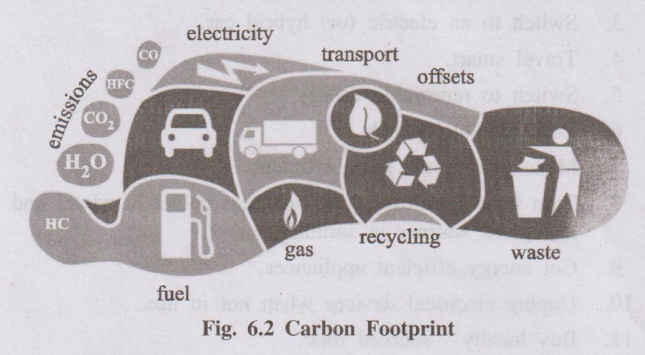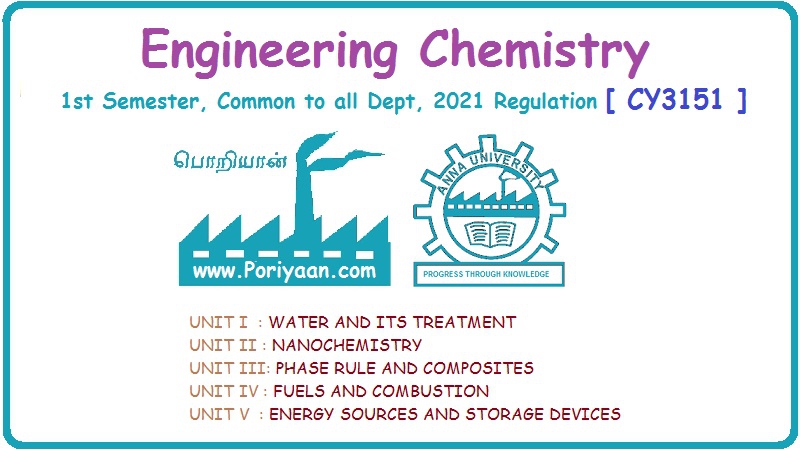Engineering Chemistry: Unit IV: b. Combustion of Fuels
Carbon Footprint
Definition, Source, Reduction
It is the total amount of green house gases (including CO2 and CH4) that are generated (emitted) by our direct and indirect activities.
CARBON FOOTPRINT
Definition
It is the total amount of green house gases (including CO2
and CH4) that are generated (emitted) by our direct and indirect
activities.
Individual carbon footprint
It is the sum total of their direct and indirect carbon emissions
over the course of a year.
i.e., Smaller your carbon footprint : better for the future
Bigger your carbon footprint : Have bigger negative impact in
environment
The average carbon footprint for a person in united state is 16
tons. Globally, the average is closer to 4 tones. To avoid 2°C rise in global
temperatures, the average global carbon footprint per year needs to drop under
2 tons by 2050.

Fig. 6.2 Carbon Footprint
1. Sources of carbon footprint
(i) Climate change.
(ii) Natural process like volcanos.
(iii) Green house gases emitted from human activities.
(iv) Pollution released by human beings doing human things.
(v) Transportation accounted for about 28% of total country.
(vi) Electricity generation accounted for about 28%
(vii) Industrial activities 22%
(viii) Heating and cooling in homes and businesses contribute11%
2. How to lower carbon footprint (or) 15 ways to reduce your carbon footprint
Lowering individual carbon footprint from 16 tons to 2 tons does
not happen over night. But, by making small changes in our action we can reduce
carbon footprint.
Once you understand where your emission comes from, you can take
steps to reduce your impact.
1. Calculate your carbon footprint.
2. Drive less,
3. Switch to an electric (or) hybrid car.
4. Travel smart.
5. Switch to renewable energy.
6. Consider solar panels.
7. Make your home more efficient.
8. Turn your thermostat just 2 degrees cooler in winter and 2
degrees warmer in summer.
9. Get energy efficient appliances.
10. Unplug electrical devices when not in use.
11. Buy locally - sourced food.
12. Start a home garden.
13. Eat less meat.
14. Don't waste water.
15. Reduce, reuse and recycle.
Engineering Chemistry: Unit IV: b. Combustion of Fuels : Tag: Engineering Chemistry : Definition, Source, Reduction - Carbon Footprint
Related Topics
Related Subjects
Engineering Chemistry
CY3151 1st Semester | 2021 Regulation | 1st Semester Common to all Dept 2021 Regulation
